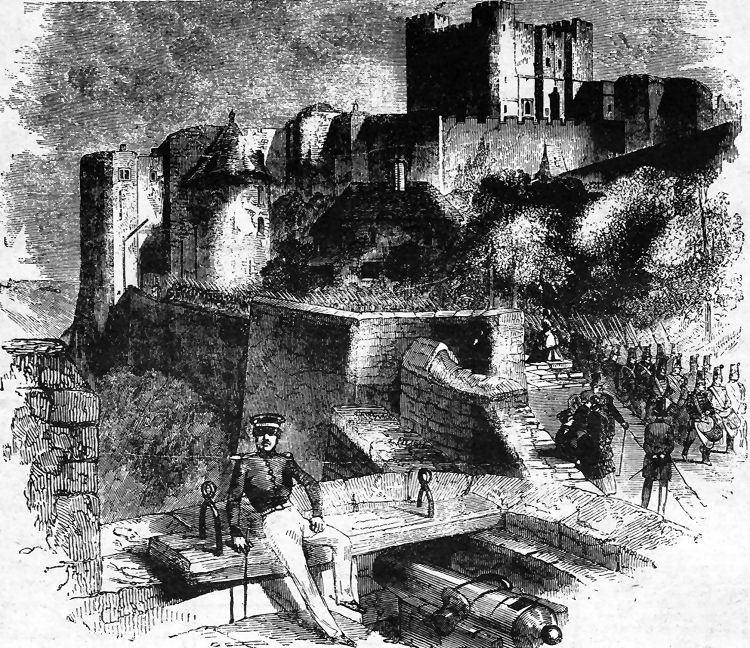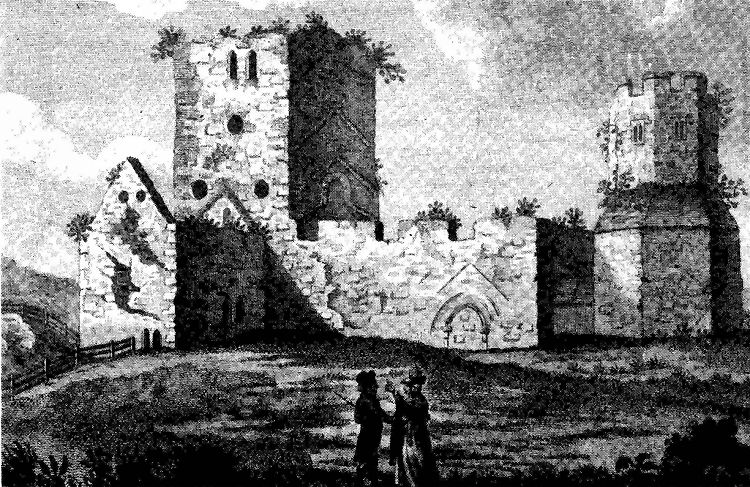Page Updated:- Sunday, 07 March, 2021. |
|||||
 Published in the Dover Express, 22 August, 1980. A PERAMBULATION OF THE TOWN, PORT AND FORTRESS. PART 107.
HAROLD’S WELL Earl Godwin was in custody of Dover Castle, and was succeeded by his son Harold. During the reign of Edward the Confessor, Harold built a wall of irregular shape, between Godwin’s tower and Colton tower ,and along this wall were erected four other towers. One of these was known as the Well tower. It tapped a copious supply of pure water at a depth of about 250ft. This well is said to have been dug by Harold, when he was Constable of the Castle; and, when he was in Normandy, he swore by the holy relics to deliver it up, with the Castle, to William of Normandy, on the death of the Confessor. Northward of these defences was the Saxon keep, occupying the same position as the present keep yard; on the north-east, was a strong Saxon gateway known as the King’s gate; and near it, within the enclosure, was a large building, known as King Arthur’s Hall.
NORMAN WORKS After the Conquest, the first Constable of the Castle was the Conqueror’s half-brother, the Bishop of Baieux. He is said to have carried out further fortifications at the Castle, but none of his additions can now be identified. The first great Norman work was the building of the Keep, and the walls enclosing the Keep yard. This was commenced about the year 1168, and finished in 1188, the greater part of the work having been done between 1181 and 1188. For nearly eight centuries that grand massive structure has crowned the Castle Hill, presenting to friends and foes an object emblematical of British power. The actual cost of the work is nowhere recorded, because much of the labour was forced, and part of the money expended was derived from the scutage of Kent, being a contribution exacted from landholders in lieu of military service. In addition to these sources—the money of the rich and the labour of the poor—it is mentioned in the Pipe Rolls that the nation contributed in cash £4,900 to this work, which, considering the difference in the purchasing power of money then and now, must have represented a sum well in excess of £1,000,000. It was money well spent, for other castles built about the same time, in far less exposed situations, have long since crumbled to ruin.

Dover Castle as depicted in an engraving published in January 1852 in a magazine called The Illustrated Exhibitor and Magazine of Art. It shows bandsmen leading a regiment of soldiers marching with fixed bayonets past a figure of a woman who might have been Queen Victoria, who visited the castle with Prince Albert in 1842. The accompanying text relates the tale of the discovery of “great pipes and casks, bound with iron hoops, in which was liquor, supposed to be wine, which by long lying had become as thick as treacle,“ also of salt congealed together as hard as stone and cross- and long-bows with arrows having brass instead of feather flights, all of which were said to date from the time of Caesar. This, writers have maintained through the centuries, helped prove the Romans built part of Dover Castle.

Above is an engraving, well over 100 years old, of the Castle church in ruins and showing clearly the succession of roof levels of different periods on the tower.
|
|||||
|
If anyone should have any a better picture than any on this page, or think I should add one they have, please email me at the following address:-
|
|||||
| LAST PAGE |
|
MENU PAGE |
|
NEXT PAGE | |